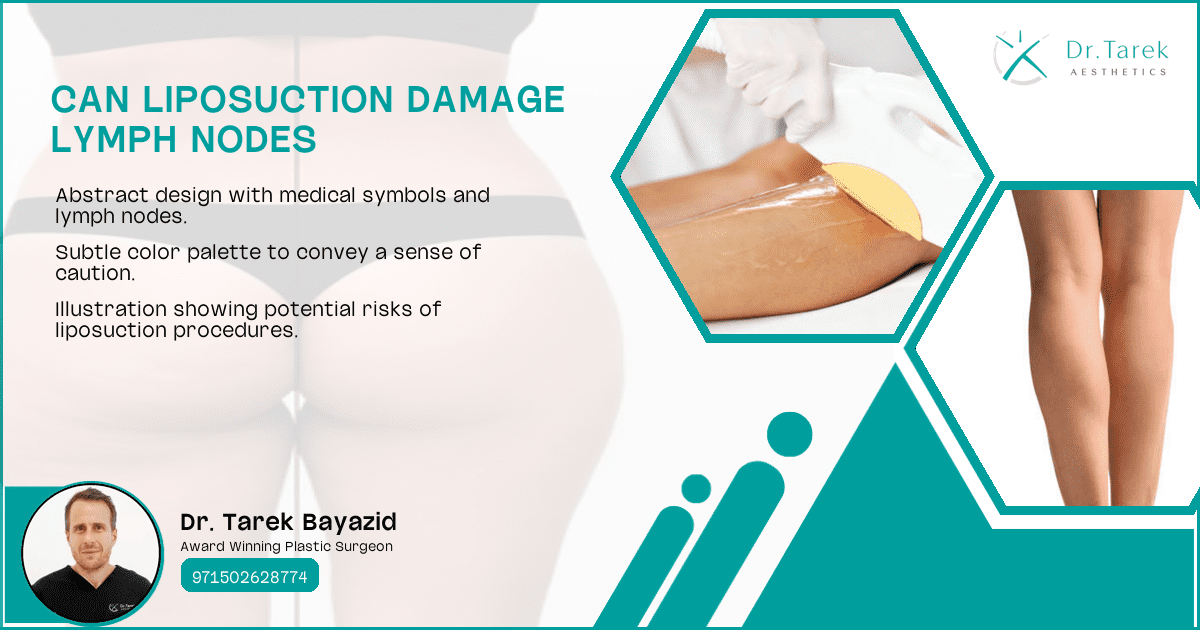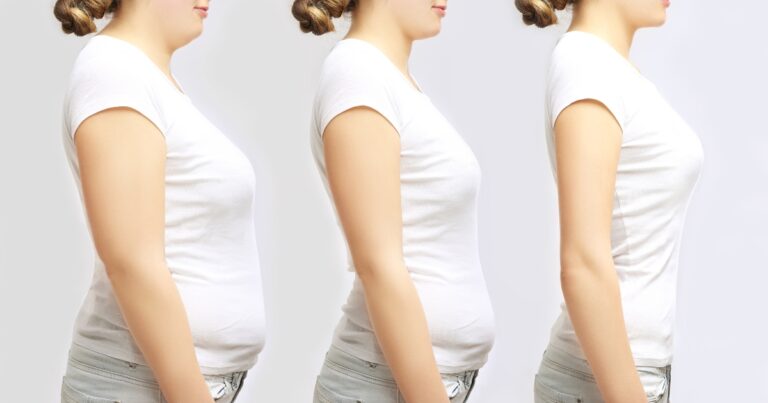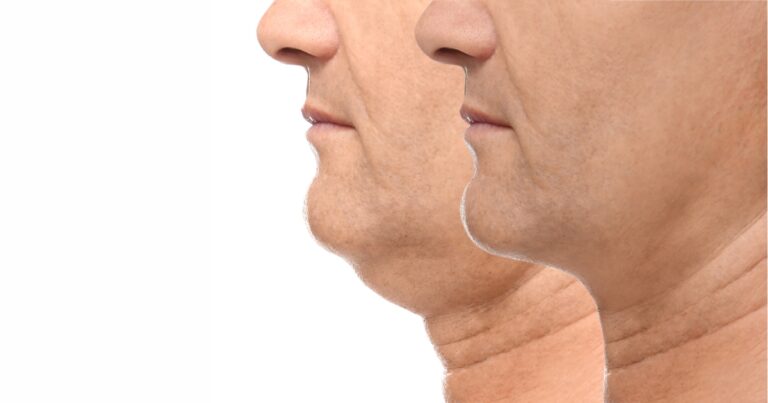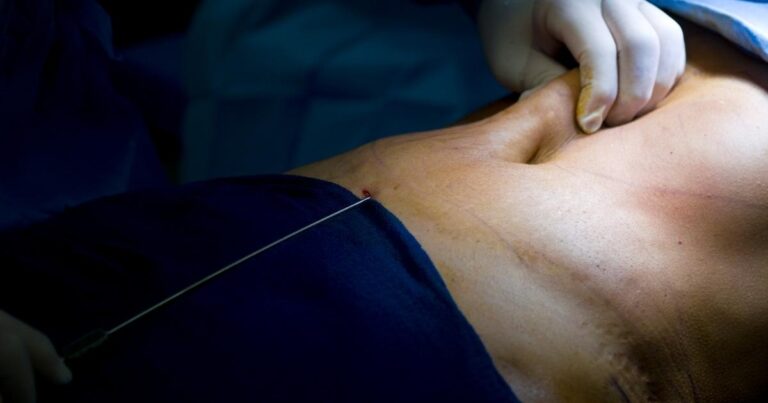Liposuction is a popular cosmetic procedure aimed at removing excess fat from specific areas of the body. However, many people wonder, “Can liposuction damage lymph nodes?” This article delves into the relationship between liposuction and the lymphatic system, exploring potential risks, precautions, and post-operative care to ensure a safe and effective procedure.
Can Liposuction Damage Lymph Nodes
Liposuction involves the removal of fat deposits through suction, which can potentially affect nearby structures, including lymph nodes. While the primary goal is to target fat, the proximity of lymph nodes to fatty tissues raises concerns about possible damage during the procedure.
Precision Body Sculpting helps shape specific areas of your body
it uses special tools to target fat and make you look more toned
The Relationship Between Liposuction and Lymphatic System
The lymphatic system plays a crucial role in maintaining fluid balance and immune function. It consists of a network of vessels and nodes that transport lymph fluid throughout the body. During liposuction, there is a risk that these structures could be inadvertently damaged, leading to complications.
Lymphatic Function and Liposuction
Understanding the normal function of the lymphatic system is essential to appreciate how liposuction might impact it.
Book A Consultation With Dr Tarek Bayazid
Top-rated Plastic Surgeon For Liposuction in Dubai
Installment Plan Available
Normal Lymphatic Drainage
The lymphatic system is responsible for draining excess fluid from tissues and returning it to the bloodstream. It also plays a role in filtering out harmful substances and supporting immune responses.
Impact of Liposuction on Lymph Flow
Liposuction can potentially disrupt normal lymphatic drainage, especially if lymph vessels are damaged during the procedure. This disruption can lead to temporary or, in rare cases, permanent changes in lymphatic function.
- Temporary Disruption : Most patients experience temporary changes in lymph flow post-surgery.
- Long-Term Effects : In rare cases, long-term lymphatic issues may arise if significant damage occurs.
Tumescent Liposuction and Lymph Vessel Damage
Tumescent liposuction is a common technique used to minimize bleeding and improve fat removal efficiency. However, its impact on lymphatic vessels is a topic of interest.
Tumescent Technique Overview
This technique involves injecting a solution into the targeted area to numb it and reduce bleeding. The solution also helps in breaking down fat for easier removal.
Effects on Lymphatic Vessels in Lipoedema Patients
In patients with lipoedema, a condition characterized by abnormal fat accumulation, the tumescent technique may pose additional risks to lymphatic vessels. Careful consideration and technique modification are necessary to minimize potential damage.
- Increased Risk in Lipoedema : Patients with lipoedema may have a higher risk of lymphatic damage.
- Technique Modifications : Surgeons may adjust techniques to protect lymphatic structures.
Can Liposuction Damage Lymph Nodes in Cancer Patients
Cancer patients, particularly those who have undergone lymph node removal or radiation, may have unique considerations when it comes to liposuction.
Special Considerations for Cancer Survivors
Cancer survivors may have compromised lymphatic systems, making them more susceptible to complications from liposuction. A thorough evaluation and consultation with healthcare providers are essential.
Precautions for Patients with Compromised Lymphatic Systems
Patients with compromised lymphatic systems should take extra precautions, including discussing potential risks with their surgeon and considering alternative procedures.
- Thorough Evaluation : Comprehensive assessment of lymphatic health is crucial.
- Alternative Procedures : Consideration of less invasive options may be beneficial.
Preventing Lymphatic Damage During Liposuction
Preventing lymphatic damage is a priority for surgeons performing liposuction. Various techniques and approaches can minimize the risk of injury to lymph nodes.
Surgical Techniques to Minimize Lymph Node Injury
Surgeons employ specific techniques to protect lymph nodes during liposuction, such as using smaller cannulas and avoiding areas with dense lymphatic networks.
Dr. Tarek’s Approach to Lymph-Sparing Liposuction
Dr. Tarek emphasizes the importance of precision and care in his approach to liposuction, prioritizing the preservation of lymphatic structures to minimize complications.
- Precision Techniques : Use of advanced techniques to protect lymph nodes.
- Patient-Centered Care : Focus on individual patient needs and anatomy.
Post-Liposuction Lymphatic Care
Proper post-operative care is essential to support lymphatic health and ensure a smooth recovery after liposuction.
Manual Lymphatic Drainage Benefits
Manual lymphatic drainage (MLD) is a specialized massage technique that can help reduce swelling and promote lymphatic flow after surgery.
Compression Therapy for Lymphatic Support
Compression garments are often recommended to support lymphatic function and reduce swelling during the recovery period.
- Swelling Reduction : Helps minimize post-operative swelling.
- Enhanced Recovery : Supports faster and more comfortable recovery.
Recognizing Signs of Lymphatic Damage After Liposuction
Being aware of the signs of lymphatic damage can help patients seek timely medical attention and prevent complications.
Symptoms to Watch For
Common symptoms of lymphatic damage include persistent swelling, pain, and changes in skin texture. Early recognition of these signs is crucial for effective management.
When to Seek Medical Attention
Patients should seek medical attention if they experience severe or persistent symptoms, such as significant swelling, pain, or signs of infection.
- Persistent Swelling : Swelling that does not improve with time.
- Pain and Discomfort : Unusual pain or discomfort in the treated area.
- Signs of Infection : Redness, warmth, or discharge from the surgical site.
Can Liposuction Damage Lymph Nodes Permanently
While permanent damage to lymph nodes from liposuction is rare, it is important to understand the potential long-term effects on lymphatic function.
Long-Term Effects on Lymphatic Function
In some cases, liposuction may lead to long-term changes in lymphatic function, affecting fluid balance and immune response.
Potential for Lymphatic System Recovery
The lymphatic system has a remarkable ability to adapt and recover from minor injuries. With proper care and monitoring, most patients experience a full recovery.
- Adaptation and Recovery : The lymphatic system can often compensate for minor damage.
- Importance of Monitoring : Regular follow-up with healthcare providers is essential.
Alternatives to Traditional Liposuction for Lymph Node Protection
For patients concerned about lymph node damage, alternative liposuction techniques may offer a safer option.
Water-Assisted Liposuction
Water-assisted liposuction uses a gentle water jet to dislodge fat, reducing the risk of damage to surrounding tissues, including lymph nodes.
Ultrasound-Assisted Liposuction
Ultrasound-assisted liposuction employs sound waves to liquefy fat, allowing for more precise removal and minimizing the risk to lymphatic structures.
- Gentle Techniques : Both methods aim to reduce trauma to surrounding tissues.
- Enhanced Precision : Improved targeting of fat deposits with minimal impact on lymph nodes.
Research on Liposuction and Lymphatic System Health
Ongoing research continues to explore the relationship between liposuction and lymphatic health, providing valuable insights for improving surgical techniques.
Recent Studies on Lymph Node Impact
Recent studies have focused on understanding the effects of liposuction on lymph nodes, highlighting the importance of technique and patient selection.
Future Directions in Lymph-Sparing Techniques
Future research aims to develop and refine lymph-sparing techniques, ensuring safer outcomes for patients undergoing liposuction.
- Innovative Approaches : Exploration of new methods to protect lymphatic structures.
- Patient Safety : Continued emphasis on minimizing risks and enhancing patient outcomes.
FAQ’s
How long does lymphatic drainage take after lipo?
Lymphatic drainage after liposuction typically takes a few weeks to a few months, depending on the extent of the procedure and individual healing factors. Patients are encouraged to follow their surgeon’s post-operative care instructions to support optimal recovery.
Can liposuction cause swollen lymph nodes?
Liposuction can cause temporary swelling of lymph nodes due to inflammation and fluid accumulation. This swelling is usually temporary and resolves with proper post-operative care. Patients should monitor their symptoms and consult their surgeon if swelling persists.
Does liposuction affect lymph nodes?
Liposuction can affect lymph nodes, but the risk is generally low when performed by an experienced surgeon. The procedure’s impact on lymph nodes depends on factors such as the technique used and the patient’s individual anatomy. Patients should discuss potential risks with their surgeon to ensure a safe procedure.






